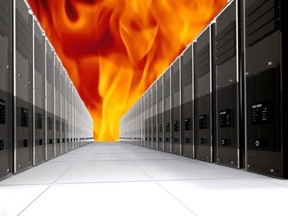One byproduct of computing almost everybody has had to deal with at some time or another is the heat. Whether it’s your Xbox 360 overheating due to poor ventilation, your MacBook’s fan roaring like a jet engine, or some other manifestation, the inescapable truth is that computers these days get warm. Whether it’s a processor, hard drive, or video card, it produces waste heat as its processors and moving parts do their thing.
Microsoft Research asks: if these things are so hot, why aren’t we heating our homes with them?
The obvious answer is that while a laptop definitely produces enough heat to make things uncomfortable for your lap, it’s nowhere near the amount necessary to heat the room, much less a whole house. Same for even the most powerful gaming and design desktops.
But server farms all over the world have to crank the A/C to keep their tightly-packed server racks from breaking down from the heat. Since space is at a premium, they put lots of processors and drives as close as possible (check out BackBlaze’s homemade servers) and the heat can get pretty serious. So what if people were to install a rack or two of servers in their home — the bigger the home, the more processors?
The study suggests that there are some serious cost savings involved with selling these “data furnaces” to people, depending on the region, but I’m not convinced. First, the upfront cost to the consumer isn’t appealing: they’re calculating this based on consumers paying the same as they would for a purpose-built furnace. People won’t agree to this unless there’s something in it for them. Then, there is the factor of electricity costs, which is no rounding error: the paper’s estimate puts cost increases at several thousand dollars per furnace. And if the home doesn’t have a fat enough broadband? Cough up an extra couple thousand for a high-speed private line.
Centralizing the power, maintenance, security, access, and administration of datacenters is still way more valuable than the potential gain from “piggybacking” on a low-priority switcheroo like this heating thing. The idea is to provide room for growth in data handling without the adverse consequences of plain linear scaling (i.e. doubling cloud storage capacity without doubling the size and emissions of the datacenters), but I don’t think this method is the way to go about it. There are too many factors that would make the servers’ owners uneasy, and there’s a good chance of upfront hassle for the “host” home. It’s an interesting idea, but I don’t think either infrastructure is ready for it.
[via i-Programmer and Gizmag]
